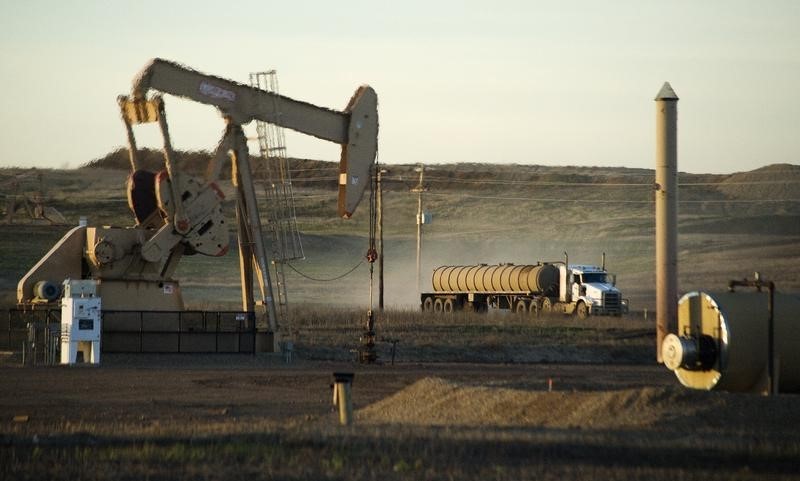By Yuka Obayashi and Muyu Xu
TOKYO/SINGAPORE (Reuters) -Oil prices fell on Wednesday, reversing some gains made after Saudi Arabia and Russia announced they would extend and deepen output cuts into August, as concerns over a global economic slowdown weighed on market sentiment.
was down 46 cents, or 0.6%, at $75.79 a barrel by 0418 GMT, after climbing $1.60 on Tuesday.
U.S. West Texas Intermediate (WTI) crude futures were at $70.87 a barrel, up $1.08, or 1.6%, from Monday’s close, having traded through a U.S. holiday to mark Independence Day without a settlement.
“Oil prices came under pressure again due to lingering worries over a slowdown in the global economy and further hikes of interest rates in the United States and Europe,” said Tomomichi Akuta, senior economist at Mitsubishi UFJ (NYSE:) Research and Consulting.
“The market will likely continue to move back and forth for some time, focusing on economic indicators in China and monetary policy by central banks,” he said, predicting Brent would trade around $75 a barrel.
A private-sector survey on Wednesday showed China’s services activity expanded at the slowest pace in five months in June, as weakening demand weighed on post-pandemic recovery momentum.
The market is also awaiting minutes from the June 13-14 meeting of the Federal Open Market Committee (FOMC) later on Wednesday for further clues on the U.S. central bank’s outlook.
Production cuts announced by Saudi Arabia and Russia on Monday only briefly lifted the market, amid concerns about weak demand and further interest rate hikes, which could trigger an economic downturn and dampen fuel demand further.
Saudi Arabia, the world’s biggest crude exporter, on Monday said it would extend its voluntary output cut of 1 million barrels per day (bpd) to August, while Russia and Algeria volunteered to lower their August output and export levels by 500,000 bpd and 20,000 bpd, respectively.
OPEC+, a group comprising the Organization of the Petroleum Exporting Countries and allies including Russia that pumps around 40% of the world’s crude, has been cutting oil output since November in the face of flagging prices.
Investors remained concerned about oil demand, however, after business surveys showed a slump in global factory activity because of sluggish demand in China and in Europe.
Traders will be looking for demand cues from industry data on and product inventories from the American Petroleum Institute later on Wednesday and government data on Thursday, both delayed by a day due to the U.S. holiday.
U.S. crude inventories were expected to fall by about 1.8 million barrels in the week to June 30, which would mark a third straight week of declines, four analysts polled by Reuters forecast.
“The trajectory of global oil stockpiles may soon become as relevant as OPEC+ supply cuts and macro headwinds given the International Energy Agency’s outlook for a tightening oil market in H2 2023,” analysts from Commonwealth Bank of Australia (OTC:) said in a note.
Read the full article here










